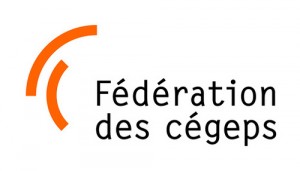Quebec’s system of “General and Vocational Colleges” or “CEGEPs” in French, combine what in other places in the U.S. and Canada would be the senior year of high school and the first year of college into a two year pre-university program that is free to students and covers most of the general education and major prerequisite courses that students need. The Federation des CEGEPs in Quebec illustrates one aspect of Canada’s drive to increase availability and effectiveness of postsecondary education. Founded in 1969 to promote education on the collegiate level to students in their first year of higher education, the Federation maintains a network of 48 colleges or “CEGEPs” intended to prepare students for university. All students who intend to continue on to university studies after eleven years of primary and secondary education are required to attend a CEGEP. Unlike community colleges, which serve only a certain percentage of the student population in a given state or province, CEGEPS are universal. In this system, students complete their primary and secondary education one year earlier than other school systems in North America, but then attend a CEGEP for a year before moving on to university or vocational training school.
 Considered a “gateway” to post-secondary education, Quebec’s CEGEPs boast a broad range of educational, cultural, sports, community and social activities that bridge that gap for many of the area’s students. Pre-university programs that lead directly into university studies and technical career programs prepare students for the next step and beyond, and all students take both general education courses and more focused pre-university or vocational courses during their time at CEGEP.
Considered a “gateway” to post-secondary education, Quebec’s CEGEPs boast a broad range of educational, cultural, sports, community and social activities that bridge that gap for many of the area’s students. Pre-university programs that lead directly into university studies and technical career programs prepare students for the next step and beyond, and all students take both general education courses and more focused pre-university or vocational courses during their time at CEGEP.
A similar idea has gained momentum in the United States as well with many schools opting into the “early college” model of schooling for students. According to a fact sheet published by Jobs for the Future, a nonprofit organization committed to fixing “leaks” in the education to career pipeline, the figures are promising. Ninety-three percent of students working in the early college system graduate (compared to 75% nationwide), and 76% go on to college. Taking these classes can also lower costs as up to 30% of credits toward a bachelors and 60% toward an associate’s degree can be completed in these programs.
Though CEGEPs are generally accepted as good foundations for students to explore their options and find a career they will enjoy, there have been a few detractors who say there is not enough return on investment, and that by funding CEGEPs, money that could be going to more effective educational systems is being misspent.
 One thing that is not in question is the importance of postsecondary education to the emerging generation of Canada’s students. As in the US, the Canadian job market is beginning to demand an advanced degree from its workers, meaning that it is imperative that organizations like the Federation of CEGEPs continue to improve the availability and affordability of education. Although neither Canada nor the United States has solved the problem of student readiness and low graduation rates, studying the pros and cons of the current CEGEP system may shed some light on possible future solutions.
One thing that is not in question is the importance of postsecondary education to the emerging generation of Canada’s students. As in the US, the Canadian job market is beginning to demand an advanced degree from its workers, meaning that it is imperative that organizations like the Federation of CEGEPs continue to improve the availability and affordability of education. Although neither Canada nor the United States has solved the problem of student readiness and low graduation rates, studying the pros and cons of the current CEGEP system may shed some light on possible future solutions.
photo credit: VilledeVicto via Flickr cc by-nd 2.0
photo credit: LeafLanguages via Flickr cc by-sa 2.0

